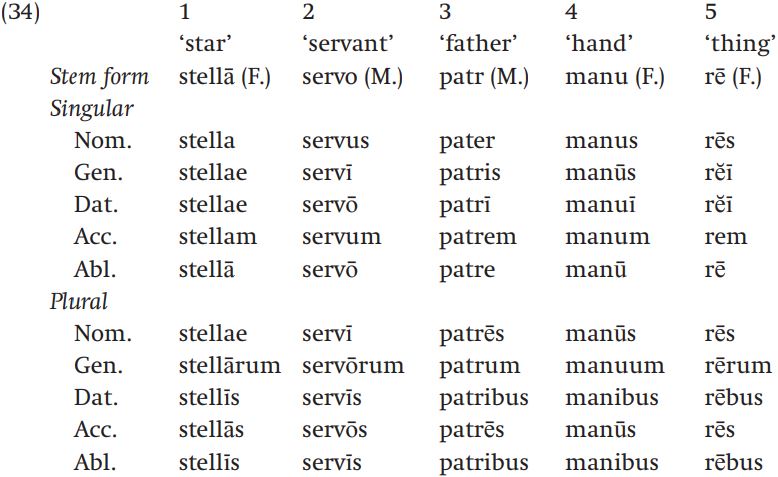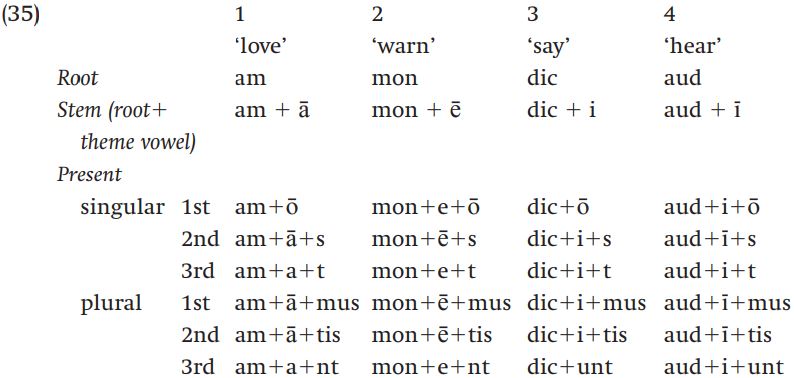


 Grammar
Grammar
 Tenses
Tenses
 Present
Present
 Past
Past
 Future
Future
 Parts Of Speech
Parts Of Speech
 Nouns
Nouns
 Verbs
Verbs
 Adverbs
Adverbs
 Adjectives
Adjectives
 Pronouns
Pronouns
 Pre Position
Pre Position
 Preposition by function
Preposition by function 
 Preposition by construction
Preposition by construction
 Conjunctions
Conjunctions
 Interjections
Interjections
 Grammar Rules
Grammar Rules
 Linguistics
Linguistics
 Semantics
Semantics
 Pragmatics
Pragmatics
 Reading Comprehension
Reading Comprehension|
Read More
Date: 15-1-2022
Date: 21-1-2022
Date: 2023-12-19
|
Within a language, not all nouns or verbs may inflect in exactly the same way; all members of a particular category will typically make the same inflectional distinctions, for example, exhibiting case, number, or tense; but the actual forms for particular cases, numbers, or tenses might differ from one group of nouns or verbs to another. These different inflectional subpatterns are called inflectional classes. In Latin, for example, nouns generally belong to one of five inflectional classes that differ to some extent in their inflectional suffixes:3

Nouns that belong to the first inflectional class, traditionally called first declension nouns, are usually feminine, and their stems always end in a long -ā. Second declension nouns are typically masculine or neuter and have stems ending in -o. In the third declension, nouns may be of any gender and stems typically end in a consonant. And so on.
Latin verbs fall into four inflectional classes or conjugations. Each conjugation is characterized by a particular vowel, called the theme vowel, which has no meaning, but is suffixed to the verb root to form a stem.

The person and number endings are attached directly to the root in the first person singular of the first and third conjugations, and otherwise to the stem, which consists of the root plus the theme vowel.
|
|
|
|
دخلت غرفة فنسيت ماذا تريد من داخلها.. خبير يفسر الحالة
|
|
|
|
|
|
|
ثورة طبية.. ابتكار أصغر جهاز لتنظيم ضربات القلب في العالم
|
|
|
|
|
|
|
قسم شؤون المعارف ووفد من جامعة البصرة يبحثان سبل تعزيز التعاون المشترك
|
|
|